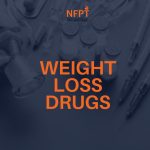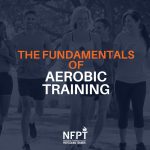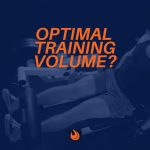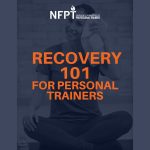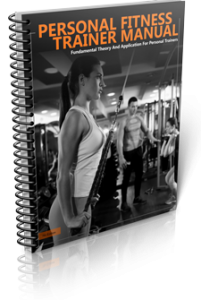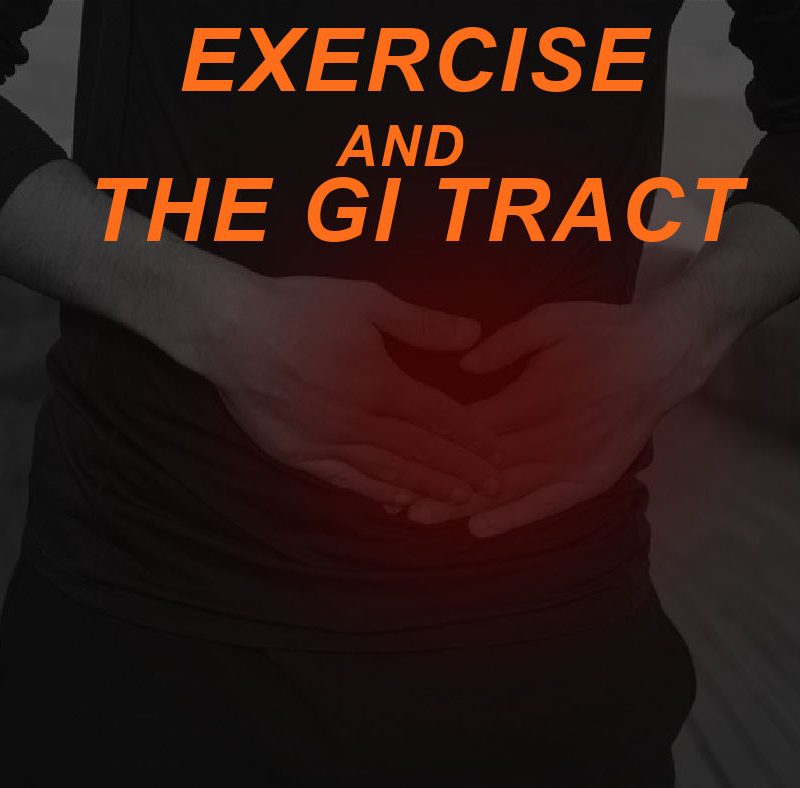
Clients and athletes who experience diarrhea and/or other digestive problems after an intense training session often ask us the reason for this unpleasant intestinal interruption. Learn about the causes and the many ways to prevent or mitigate these situations, and the positive impact exercise has on digestion.
Sensitive Digestion
Certain modes of exercise cause food to pass through the gastrointestinal tract at a more rapid pace; both strenuous bodybuilding and running fall into this category. The resulting side effects of a successful but brutal training session may come in the form of reduced nutrient/water absorption and looser stools. In addition, the hormones that affect digestion can take a hit during workouts; given that intense exercise limits blood flow to the gastrointestinal system, hormonal homeostasis gets disrupted. While each of these situations can wreak havoc on one’s body, together they create a perfect storm for those who have sensitive digestive systems.
Running and Digestion
I’ve always considered running an ideal form of exercise, in terms of convenience. Don your favorite tee shirt and shorts, lace up those running shoes, and head outside! Clients who are seeking to simplify their aerobic exercise program may feel the same way. However, not everything is always as it seems, especially for individuals who live with temperamental digestive issues.
Most regular runners, this author included, have at one time or another experienced the sudden urge of a loose bowel movement while running, often causing the athlete to either speedily find the closest restroom before something ugly occurs, or prematurely terminate the run. Such occurrences do not stem from any diseased state of the GI tract, but rather from a series of intricate changes taking place within the body. Intense exercise can incite a temporary negative effect on the digestion, summoning the onset of nausea, heartburn, diarrhea, and gastrointestinal bleeding. Even healthy runners seem especially susceptible to these uncomfortable circumstances.
Throughout any challenging workout, blood flow to the intestines slows as the body prioritizes the shuttling of blood to the lower extremities. While this immediate bathroom issue poses an inconvenience, engaging in intense physical exercise like running has been shown to lessen one’s odds of developing cancer of the colon.
Exercising With IBS
Scientists in Sweden recently collaborated on a new study investigating whether physical activity represents a valid treatment for mitigating irritable bowel syndrome (IBS). The study included 102 patients, divided randomly into a physical activity group and a control group. During the 12-week trial, the physical activity group exercised 3-5 times a week, for 20-60 minutes each session, maintaining a moderate-to-vigorous level of intensity. The control group maintained their current lifestyles.
Of those in the physical activity group, 43% demonstrated a significant decrease in symptom severity, compared with only 26% of the control group subjects. The physical activity group also reported improvements in sleep, energy level, overall “life functioning” and social interactions. In addition to demonstrating that physical activity can be an effective way for some IBS patients to manage intense symptoms, scientists now feel that a lack of active movement may actually lead to worsening episodes.
GERD and Meal Timing
The uncomfortable symptoms of esophageal reflux (commonly referred to as GERD) have a tendency to present themselves when an acidic food source reaches the lower base of the esophagus, and as the stomach fills. Since physical exercise too may bring about a reflux episode, experts caution GERD sufferers to time their physical activity, allowing the GI tract an opportunity to for proper digestion to take place. It might help too for sufferers of indigestion to take their time chewing the food to allow the digestive process to start taking place.
Mode of Exercise Matters
Diverticulitis affects roughly half of our 50+ population. This ailment refers to the presence of small sac-like protrusions (diverticula) which tend to expand and push right through the outer wall of the colon. The majority of individuals do not realize this condition exists within their digestive tracts, living asymptomatically up until they experience a flare-up. These attacks potentially lead to inflammation of the region, inciting fever, infection, bleeding, and gastric pain.
Diverticular disease is more prevalent among those who have sedentary occupations. A research study spanning 18 years followed the lives of approximately 50,000 males, ranging in age from 40-75 years. Data pointed to a lower incidence of diverticular disease complications in volunteers who maintained a regular physically active lifestyle. However, scientists also found that not just any mode of activity would mitigate symptoms.
Despite the aforementioned digestion problems sometimes associated with running, the up-and-down motion of running and jogging apparently decreases pressure within the colon. This in turn provides the basis for better digestion while encouraging regular elimination. Dynamic but less vigorous activities such as tennis or cycling tends to elicit only minimal risk of diverticulitis complications, while light movements like yoga appear to have minimal to no effect on frequency/severity of flare-ups.
Can Exercise Help an Ailing Liver?
Individuals suffering from non-alcoholic fatty liver disease, or NAFLD, manufacture an excess of a substance called aminotransferase. Many studies reveal that exercise-induced weight loss may lead to a reduction in liver fat and/or aminotransferase concentrations.
A recent study attempted to analyze the relationship between physical activity and risk of severe NAFLD-related conditions such as advanced fibrosis. Data culled from observing over 800 middle-aged adult patients suggests that exercise intensity might play a greater role than either duration or total volume of activity in mitigating the effects of NAFLD.
Offering Clients Appropriate Digestion Direction
Many athletes, runners in particular, minimize their risks of GI disturbance with appropriate fluid intake, prudent meals/meal timing, and limited use of non-steroidal anti-inflammatory drugs (NSAIDs). Trainers who work with clients who have mentioned living with chronic/frequent exercise-induced GI conditions might steer these individuals away from engaging in a marathon. However, we can always find a suitable activity for all of our clients, if they inform us of any current health issues. As providers of a physical service, it is not inappropriate to ask these questions during an initial consultation.
References:
badgut.org/information-centre/a-z-digestive-topics/physical-activity-and-gi-health/
pubmed.ncbi.nlm.nih.gov/21206488/
pubmed.ncbi.nlm.nih.gov/15929753/
www.healthline.com/health/exercise-fitness/diarrhea-after-working-out#causes
pubmed.ncbi.nlm.nih.gov/19367267/
pubmed.ncbi.nlm.nih.gov/21206486/

